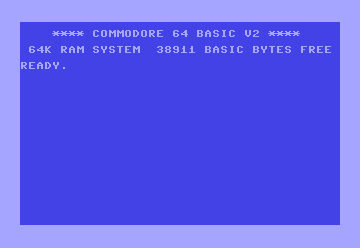I assume that like many developers, I first became interested in computers while playing computer games. Our family owned a Commodore 64 and I can only wonder how many hours I wasted collecting cave artifacts, dodging neighborhood obstacles on my paper route, and conquering the new world. And the theme song to M.U.L.E. will forever be ingrained into my memory (side note: A really interesting article on the creation of M.U.L.E.).
Unfortunately, I spent all of my time playing games and not learning how to create them. My BASIC knowledge didn’t get past:
10 PRINT "SOME PHRASE FUNNY TO A 12-YEAR OLD"; : GOTO 10
RUN
I’ve always wanted to learn more about game development and decided to start learning some of the basics. I thought a good first step would be looking into collision detection. One quick Google search later and I came across a great post by Paul Firth on that exact topic. I only needed to get halfway through the article to learn how to animate balls bouncing in a box, animate balls bouncing in a rotated box, and to develop a simple game of Pong (source code can be found here). Paul’s blog contains a wealth of in-depth information about game creation and I hope to get through many more of his posts.
With the advent of HTML5 canvas and the large number of JavaScript libraries/frameworks supporting it, game development has become accessible to anyone with a modern browser and a text editor. It will be very interesting to see how gaming on the web evolves into the future.



